
The Health and Human Rights Approach to Greenhouse Gas Pollution
CLIMATE EMERGENCY INSTITUTE
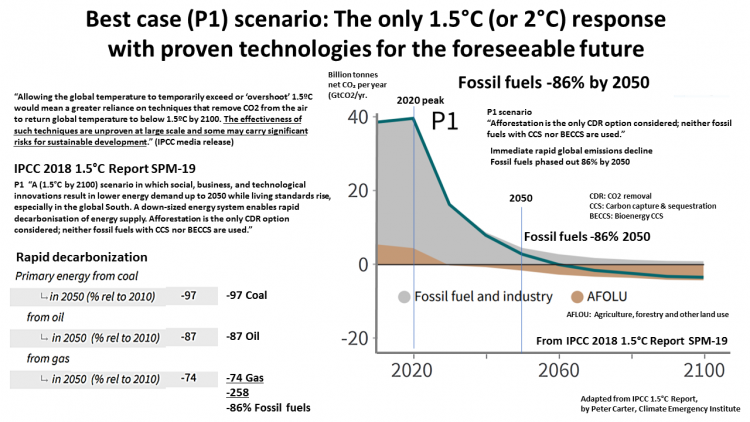
IPCC Oct. 2018 1.5°C Report
IPCC 2018 Special Report 1.5°C
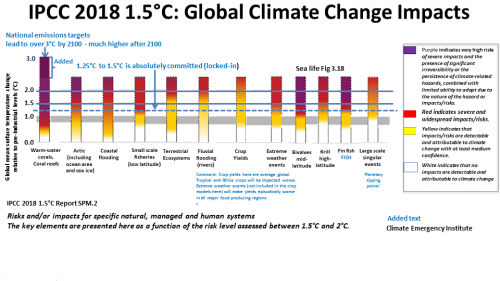

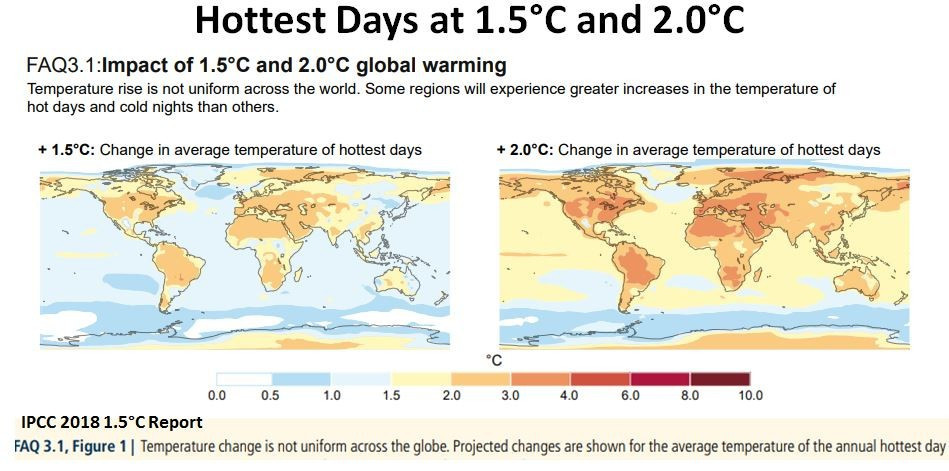
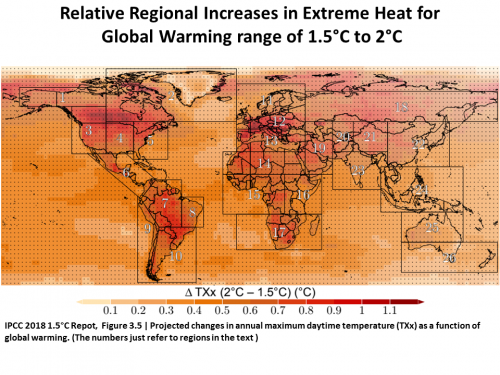
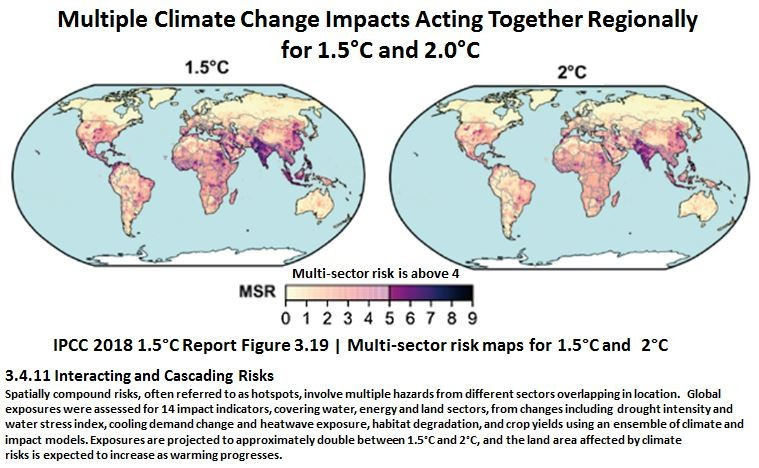
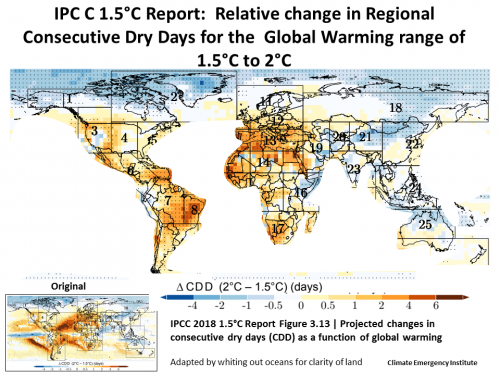
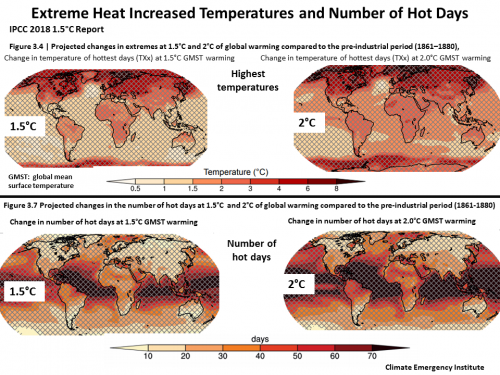
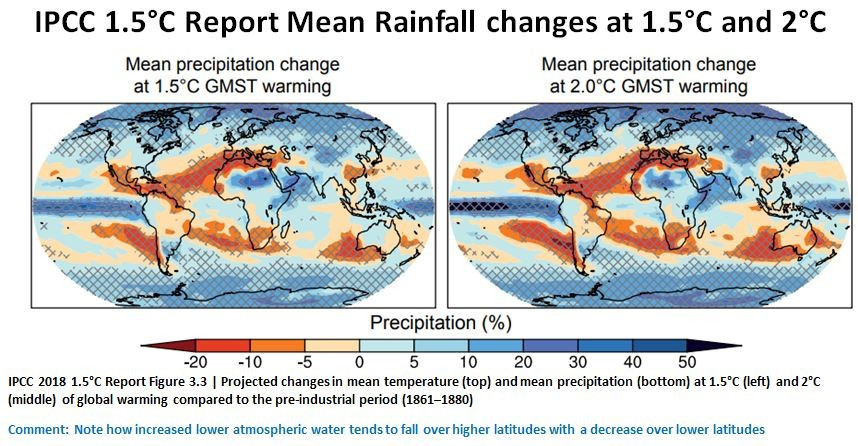
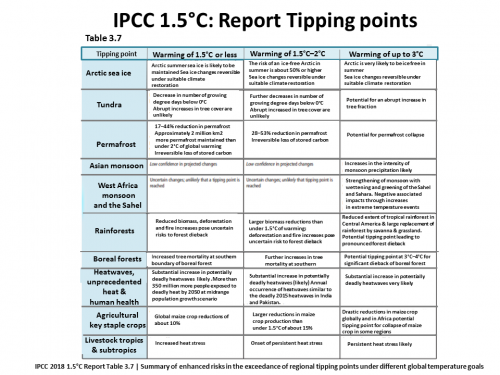
IPCC 2018 1.5C Report, Box 3.6
IPCC 1.5°C Report: Economic Damages
from Climate Change
Global economic damages of climate change are projected to be smaller under warming of 1.5°C than 2°C in 2100 (Warren et al., 2018c).
The mean net present value of the costs of damages from warming in 2100 for 1.5°C and. 2°C (including costs associated with climate change-induced market and non-market impacts, impacts due to sea level rise, and impacts associated with large-scale discontinuities) are $54 and $69 trillion, respectively, relative to 1961–1990.
Values of the social cost of carbon vary when tipping points are included. The social cost of carbon in the default setting of the Dynamic Integrated Climate-Economy (DICE) model increases from $15 tCO2 to $116 when large-scale singularities or ‘tipping elements’ are incorporated . These calculations excluded the large health co-benefits that accrue when greenhouse gas emissions are reduced
The economic damages of climate change in the USA are projected to be large , the USA stands to lose -0.1 to 1.7% of the Gross Domestic Product (GDP) at 1.5°C warming.
from Climate Change
Global economic damages of climate change are projected to be smaller under warming of 1.5°C than 2°C in 2100 (Warren et al., 2018c).
The mean net present value of the costs of damages from warming in 2100 for 1.5°C and. 2°C (including costs associated with climate change-induced market and non-market impacts, impacts due to sea level rise, and impacts associated with large-scale discontinuities) are $54 and $69 trillion, respectively, relative to 1961–1990.
Values of the social cost of carbon vary when tipping points are included. The social cost of carbon in the default setting of the Dynamic Integrated Climate-Economy (DICE) model increases from $15 tCO2 to $116 when large-scale singularities or ‘tipping elements’ are incorporated . These calculations excluded the large health co-benefits that accrue when greenhouse gas emissions are reduced
The economic damages of climate change in the USA are projected to be large , the USA stands to lose -0.1 to 1.7% of the Gross Domestic Product (GDP) at 1.5°C warming.
PDF of IPCC 1.5C Table 3.2 Global and regional climate changes and hazards
PDF of IPCC 1.5C Report on food security
PDF of 3 page IPCC 1.5C Report essentials
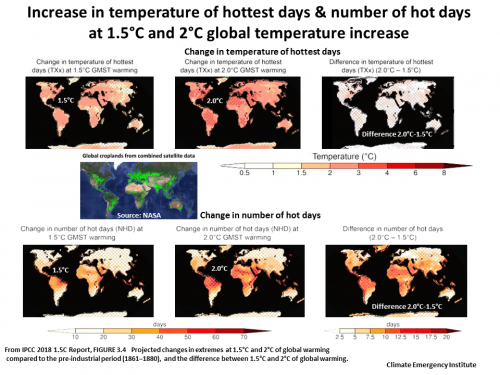

The report shows with certainty that 1.5C is globally disastrous but 2C is total planetary catastrophe
IPCC video 1.5C Report
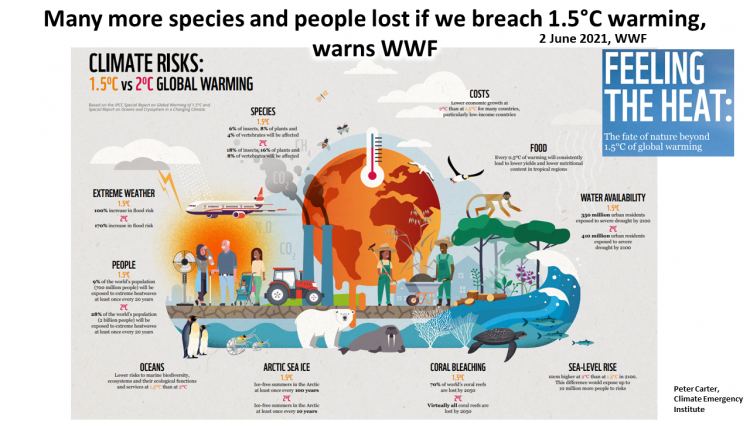

CEI
MITIGATION (best-case P1)
- Immediate (2020) rapid decline in global emissions
- By 2030 a 50% drop emissions
- By 2050 near zero Fossil fuel energy